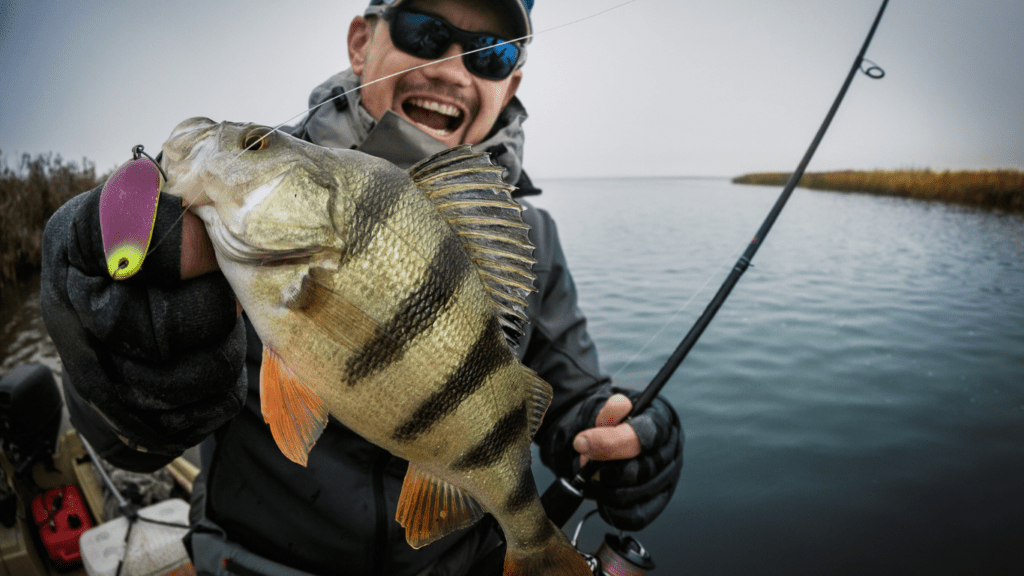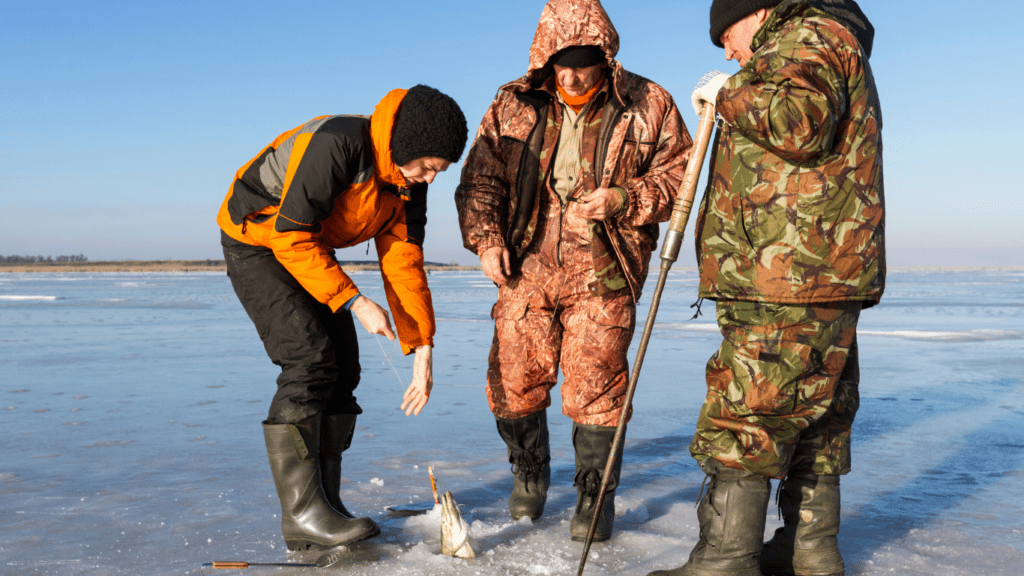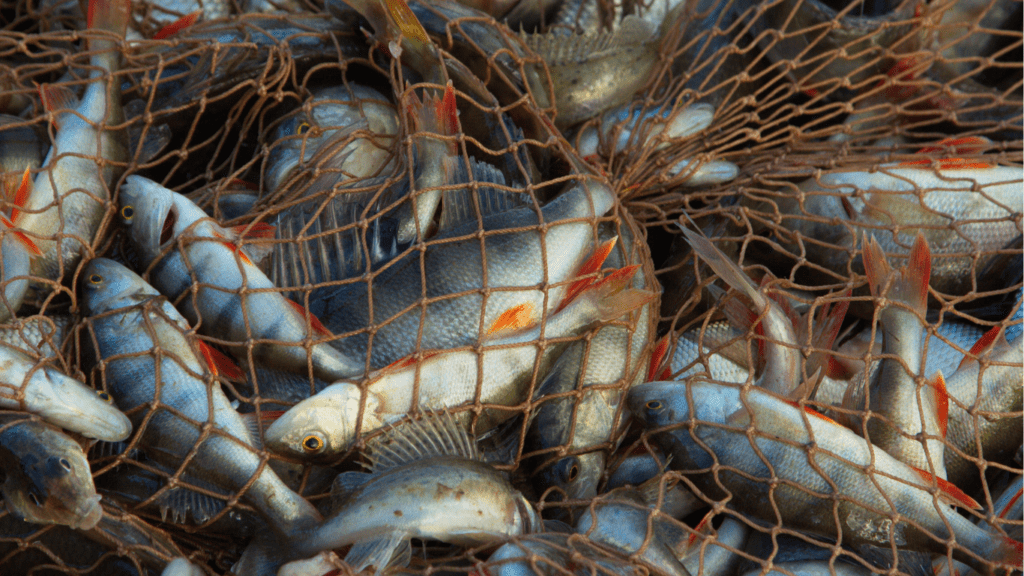The Basics Of Seasonal Fishing
Seasonal fishing revolves around understanding how fish behavior changes throughout the year. Factors like water temperature, weather changes, and spawning seasons significantly influence when and where fish are most active.
Understanding Seasonal Fish Patterns
Fish activity and location are driven by predictable seasonal patterns. In spring, many species like bass and crappie move toward shallow waters for spawning. During summer, fish such as trout often retreat to deeper, cooler areas. Fall brings feeding frenzies as fish like walleye prepare for winter, and during winter, species like perch and panfish stay active in freezing waters. Adjusting fishing techniques and locations based on these behaviors ensures better results.
Importance Of Water Temperature And Weather
Water temperature directly impacts fish metabolism, influencing feeding times and locations. In cold waters below 50°F, fish like pike are more sluggish and require slower bait movement. Warmer waters above 70°F increase activity levels for species like catfish. Weather also alters fish moods, with cloudy days encouraging surface feeding, while bright sun drives them deeper. Tracking water conditions helps me refine my approach for each season.
Spring Fishing: What’s Biting Right Now?
Spring offers excellent fishing opportunities as fish move closer to shallow waters to feed and spawn. Understanding which species are most active helps maximize success during this season.
Popular Species To Target In Spring
- Bass: Largemouth and smallmouth bass are highly active in spring. They frequent shallower spots like coves and under submerged structures during their spawning season.
- Crappie: These fish thrive in warming waters, often gathering near brush piles, docks, and submerged trees.
- Trout: Stocked trout are common in spring in rivers and streams with cooler water temperatures.
- Walleye: Walleye spawn early in spring, making them easier to find in shallow rocky areas.
Panfish: Species like sunfish and bluegill move into bays and shallows where water temperatures rise faster.
Best Baits And Techniques For Spring Fishing
- Soft Plastics: Using soft plastic worms or creature baits mimics prey bass hunt during this season. Rigging these baits weedless works best in vegetation-filled waters.
- Jigs: Bright-colored crappie jigs or hair jigs help entice panfish and walleye near bottom structures.
- Live Baits: Minnows appeal to crappie, walleye, and bass; worms attract trout effectively.
- Spinnerbaits: These work well for covering larger areas, especially when targeting active bass or walleye in murky water.
- Slow Retrieval: Fish can still be sluggish in early spring, so adjusting retrieve speed to match their pace is crucial.
Summer Fishing: What To Expect
Summer fishing presents unique challenges and opportunities as rising water temperatures influence fish behavior. Targeting species that thrive in warmer conditions maximizes success during these months.
Fish Species Active During Summer
Several species remain highly active in summer, including bass, catfish, bluegill, and trout. Largemouth bass often move to shaded areas or deeper structures to escape the heat. Catfish prefer warm waters and consistently bite on cut bait, stink bait, or live bait. Bluegill gather near vegetation along shorelines and readily strike small insects or worms. Trout seek cooler waters, migrating toward deeper lakes or shaded streams, becoming more active during early morning or late evening hours.
Tips For Fishing In Warmer Waters
Understanding water temperature and fish habits is crucial for summer fishing. Fishing deeper areas or shaded zones where water temperatures are cooler increases chances of catching fish. Using slow retrieval techniques with soft plastics or topwater lures mimics prey in warmer environments. Fishing at dawn or dusk, when fish are most active, yields better results than midday. Pay attention to oxygen levels, as fish often cluster near areas where aeration or current provides cooler, oxygen-rich water.
Fall Fishing Opportunities
Fall offers some of the most rewarding fishing experiences as fish actively feed to prepare for winter. Cooler water temperatures and shorter daylight hours create prime conditions for anglers.
Common Fish Caught In Fall
Largemouth bass, smallmouth bass, and walleye dominate fall fishing due to their increased feeding activity. Largemouth bass often strike at crankbaits and spinnerbaits, especially near vegetation. Smallmouth bass prefer rocky areas, making jigs and soft plastics effective. Walleye move into shallower waters, responding well to jerkbaits and live minnows.
Trout remain active in cooler waters, particularly along riverbanks and near submerged structures. Use small spinners, spoons, or flies for better success. Panfish like bluegill and crappie gather in deeper pockets, making live bait such as worms or small minnows ideal.
Seasonal Adjustments For Successful Fishing
Fishing in fall requires adapting to the changing habits of fish. Target shallow areas near structures or drop-offs during early mornings or late afternoons when fish are feeding. Midday fishing tends to yield fewer bites as fish retreat to slightly deeper, cooler waters.
Match lure colors to the season by mimicking baitfish, with natural tones like silver, gold, or white being the most effective. Switch to slower retrieval speeds to account for fluctuating water temperatures, attracting bites from less aggressive fish. Emphasize bait variety, such as including crankbaits, spoons, and live bait, to entice different species adjusting their diets for winter preparation.
Winter Fishing Challenges And Rewards

Winter fishing offers unique opportunities for anglers willing to brave the cold. Despite slower fish metabolism, some species remain active, presenting rewarding catch possibilities for prepared anglers.
Fish That Thrive In Cold Conditions
Several species stay active in winter’s cold waters. Perch, bluegill, walleye, and trout are common targets during this season. Perch gather in schools near deep structures or drop-offs, while bluegill linger near vegetation or brush piles. Walleye often move to mid-depth areas, especially near points or ledges, and trout thrive in cold, oxygen-rich waters, making reservoirs or tailwaters productive locations. Ice fishing hotspots often reveal species like crappie, whitefish, and lake trout.
Gear And Strategies For Winter Fishing
Proper gear ensures success in cold conditions. Light or ultralight rods with sensitive tips are ideal for detecting subtle winter bites. Ice augers, tip-ups, and sleds become essentials for ice fishing enthusiasts. Lure choices include:
- small jigs
- spoons
- live baits
like waxworms or minnows, as fish feed less aggressively. Staying mobile increases the chances of finding active fish under ice or open water.
Strategies should include fishing during midday when water temperatures peak slightly. Use slow retrieval methods and vertical jigging to mimic sluggish prey movements. Maintaining precise presentation and targeting known fish-holding spots create the best opportunity to capitalize on winter’s challenges and rewards.





